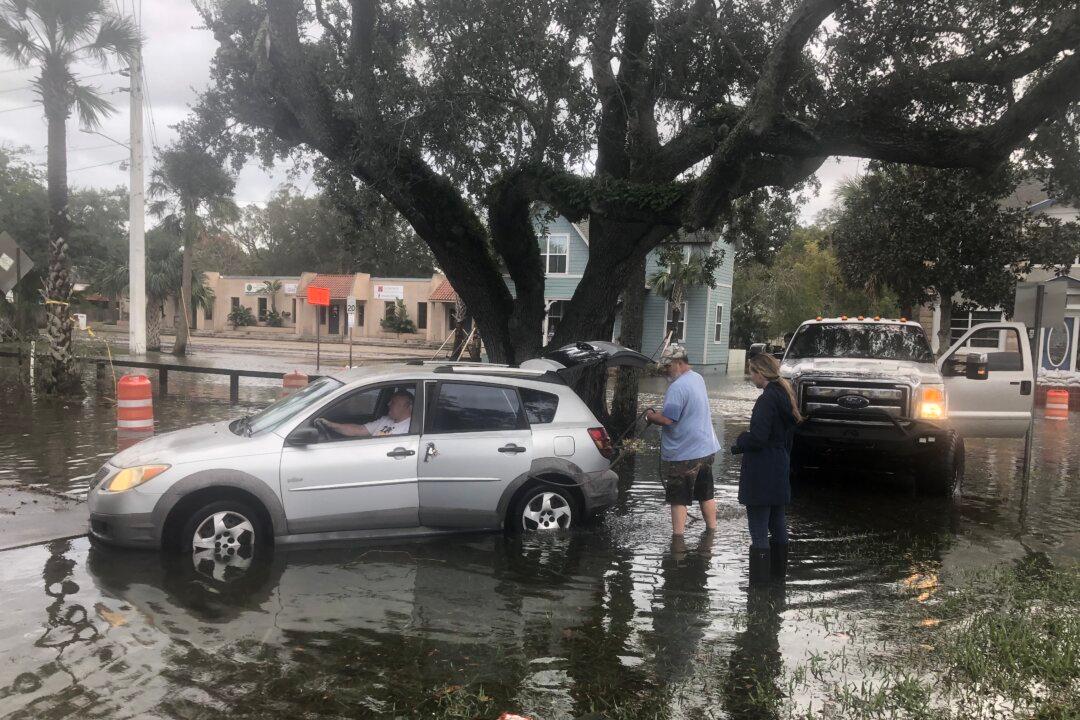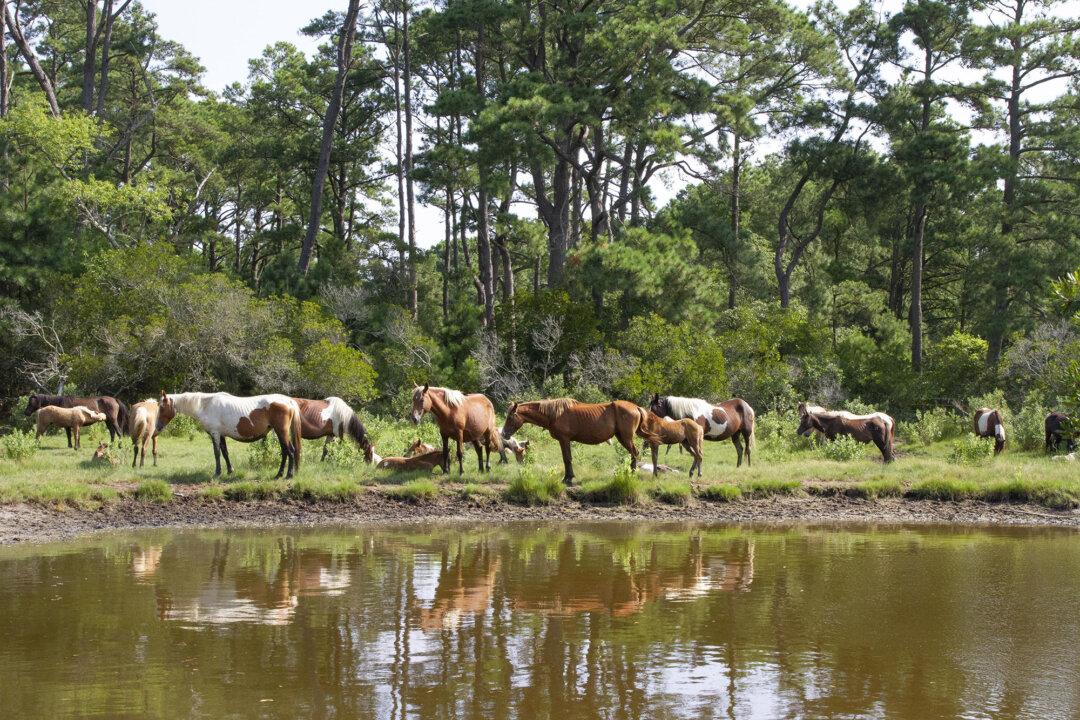ST. AUGUSTINE, Fla.—Tropical Storm Nicole pummeled beach communities on Florida’s Atlantic coastline from just above the southern tip to the northernmost corner of the state on Nov. 10, raking away sand dunes, damaging structures, and flooding buildings and streets.
At least five people were killed in its wake, including two who were electrocuted by a downed power line while driving, according to a report by AccuWeather.





